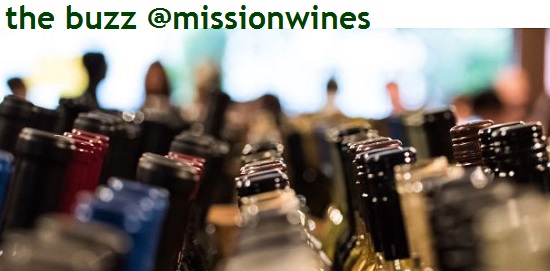'Tis the Season...
The holidays are here and
Mission Wines is ready to help you with all your wine gift needs. We have assembled a great selection of
holiday gift box sets that are guaranteed to please clients, friends, and
family. Our offering covers a range of wine styles in a variety of pricing
options which include our elegant wooden gift boxes and
festive bow. We can ship to many states in the USA. Supplies are limited. Call (866)
FOR WINE, email info@missionwines.com or visit
us to place your orders today!
1. California Classic Two-Bottle Gift Box (49.99) Made by Lane Tanner of
Hitching Post fame, this is cool-climate
California winemaking at its best.
2013
LUMEN SANTA MARIA VALLEY CHARDONNAY
Citrus and creamy
tropical fruit notes lead to a succulent palate kept fresh by bright acidity,
with a lingering note of almond on the finish. 92 WE
2013
LUMEN SANTA BARBARA COUNTY PINOT NOIR
Aromas and flavors of cherry and raspberry leap from the
glass, leading to a silky, seamless palate accented by notes of baking spice. 91 WE
2. Sommelier Selection Two-Bottle Gift Box (79.99) A pair of elegant wines from two of the world’s great wine-producing
regions makes this the ultimate connoisseur’s gift.
2014 PATRICK
PIUZE "TERROIR DE COURGIS" CHABLIS
From the excellent 2014 vintage
comes this elegant Chablis made by the talented Patrick Piuze. Flinty lemon
aromas with focused minerality.
2005
LA RIOJA ALTA "VINA ARDANZA" RESERVA RIOJA
La Rioja Alta is one of the Rioja region’s
most famous bodegas. Elegant and
complex, this is an exceptional value in
old-school Rioja. 92 WS, 92 ST
3. Artisan Champagne Single-Bottle
Gift Box (84.99) One of Champagne’s
most respected houses, Jacquesson produces terroir-based cuvees of exceptional
quality. Exclusively Grand and Premier Cru fruit is used for the 738 Cuvee. 92 WS
JACQUESSON CUVEE 738 EXTRA BRUT CHAMPAGNE
According to Robert Parker: “Most Champagne fans are familiar with the house’s
700-series…which remain absolutely delicious.”
4. Napa Valley Legends Two-Bottle Gift Box
(129.99) Two iconic wines for the California collector.
2012
INGLENOOK “CASK” NAPA VALLEY CABERNET SAUVIGNON
From one of the
greatest vintages in recent history in Napa Valley comes this outstanding
Cabernet from the historic Inglenook estate. Originally produced between 1934
and 1964, Inglenook "Cask" wines were among the best Cabernets ever
made and are making a serious comeback with the 2012 vintage which should age
beautifully for 20-25 years. 93 RP, 92 AG
2013 CHATEAU MONTELENA NAPA VALLEY CHARDONNAY
After 45 years of winemaking including
the historic defeat of the French competition in the 1976 Judgment of Paris
tasting, Montelena continues to produce one of the California’s most elegant
expressions of Chardonnay.
5. Tour de France Three-Bottle Gift Box (249.99) For the
collector or enthusiast, a set of three wines from France’s most famous wine
regions to enjoy now or add to the cellar.
2012
JOSEPH VOILLOT VOLNAY "VIEILLES VIGNES", BURGUNDY
Known as the
“winemaker’s winemaker”, Jean-Pierre Voillot is one of the most respected vignerons in the region. This shows
the finesse, purity and terroir-driven expression that is the
quintessence of Burgundy.
2012 HAUT BAILLY, PESSAC-LEOGNAN, BORDEAUX
This noble red is rich in black fruit
with classic Pessac elegance in the form of graphite notes and seamlessly
integrated of oak. Perfectly balanced, this can age at least two decades. 93-95 WE, 94
JS, 91-93 RP, 93 WS, 92 ST
2012
LE VIEUX DONJON CHATEAUNEUF-DU-PAPE, RHONE VALLEY
A southern Rhone classic, this
traditional Grenache-based blend shows all medley of garrigue, lavender,
pepper, cassis and black fruit and flavors that make the great wines of this
region so famous. 92-94 ST, 91-94 RP
6. Custom Gift Sets
Let the pros--us!--select the
best wines within your style parameters for a unique, customized gift. Choose
from one, two, three, or six bottle wooden gift box options. Other packaging
options available too. Please contact us for more details.
Also Available:
Mission Wines Wine Club Memberships Covering a range of interests and
budgets, our three offerings include two bottles per month:
Happy
Holidays and Cheers!
Mission Wines
866-FOR WINE 1114 Mission Street, South Pasadena, CA MissionWines.com Questions? Email us at info@missionwines.com











